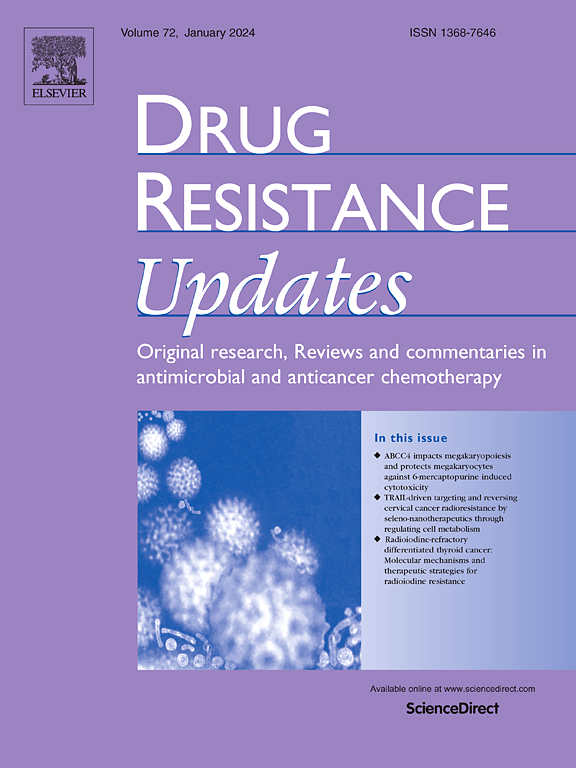CEA-induced PI3K/AKT pathway activation through the binding of CEA to KRT1 contributes to oxaliplatin resistance in gastric cancer
IF 15.8
1区 医学
Q1 PHARMACOLOGY & PHARMACY
引用次数: 0
Abstract
Background
The serum level of carcinoembryonic antigen (CEA) has prognostic value in patients with gastric cancer (GC) receiving oxaliplatin-based chemotherapy. As the molecular functions of CEA are increasingly uncovered, its role in regulating oxaliplatin resistance in GC attracts attention.
Methods
The survival analysis adopted the Kaplan![]() Meier method. Effects of CEA on proliferative capacity were investigated using CCK8, colony formation, and xenograft assays. Oxaliplatin sensitivity was identified through IC50 detection, apoptosis analysis, comet assay, organoid culture model, and xenograft assay. Multi-omics approaches were utilized to explore CEA’s downstream effects. The binding of CEA to KRT1 was confirmed through proteomic analysis and Co-IP, GST pull-down, and immunofluorescence colocalization assays. Furthermore, small molecule inhibitors were identified using virtual screening and surface plasmon resonance.
Meier method. Effects of CEA on proliferative capacity were investigated using CCK8, colony formation, and xenograft assays. Oxaliplatin sensitivity was identified through IC50 detection, apoptosis analysis, comet assay, organoid culture model, and xenograft assay. Multi-omics approaches were utilized to explore CEA’s downstream effects. The binding of CEA to KRT1 was confirmed through proteomic analysis and Co-IP, GST pull-down, and immunofluorescence colocalization assays. Furthermore, small molecule inhibitors were identified using virtual screening and surface plasmon resonance.
Results
Starting from clinical data, we confirmed that CEA demonstrated superior ability to predict the prognosis of patients with GC who received oxaliplatin-based chemotherapy, particularly in predicting recurrence-free survival based on serum CEA level. In vitro and in vivo experiments revealed CEAhigh GC cells presented increased proliferative capacity and decreased oxaliplatin sensitivity. The resistance phenotype was transmitted through secreted CEA. Multi-omics analysis revealed that CEA activated the PI3K/AKT pathway by binding to KRT1, leading to oxaliplatin resistance. Finally, the small molecule inhibitor evacetrapib, which competitively inhibits the CEA-KRT1 interaction, was identified and validated in vitro.
Conclusions
In summary, the CEA-KRT1-PI3K/AKT axis regulates oxaliplatin sensitivity in GC cells. Treatment with small molecule inhibitors such as evacetrapib to inhibit this interaction constitutes a novel therapeutic strategy.
CEA通过与KRT1结合而激活PI3K/AKT通路有助于胃癌患者对奥沙利铂的耐药
血清癌胚抗原(CEA)水平对接受奥沙利铂为基础化疗的胃癌(GC)患者具有预后价值。随着CEA的分子功能被越来越多的发现,其在胃癌中调节奥沙利铂耐药的作用引起了人们的关注。
本文章由计算机程序翻译,如有差异,请以英文原文为准。
求助全文
约1分钟内获得全文
求助全文
来源期刊

Drug Resistance Updates
医学-药学
CiteScore
26.20
自引率
11.90%
发文量
32
审稿时长
29 days
期刊介绍:
Drug Resistance Updates serves as a platform for publishing original research, commentary, and expert reviews on significant advancements in drug resistance related to infectious diseases and cancer. It encompasses diverse disciplines such as molecular biology, biochemistry, cell biology, pharmacology, microbiology, preclinical therapeutics, oncology, and clinical medicine. The journal addresses both basic research and clinical aspects of drug resistance, providing insights into novel drugs and strategies to overcome resistance. Original research articles are welcomed, and review articles are authored by leaders in the field by invitation.
Articles are written by leaders in the field, in response to an invitation from the Editors, and are peer-reviewed prior to publication. Articles are clear, readable, and up-to-date, suitable for a multidisciplinary readership and include schematic diagrams and other illustrations conveying the major points of the article. The goal is to highlight recent areas of growth and put them in perspective.
*Expert reviews in clinical and basic drug resistance research in oncology and infectious disease
*Describes emerging technologies and therapies, particularly those that overcome drug resistance
*Emphasises common themes in microbial and cancer research
 求助内容:
求助内容: 应助结果提醒方式:
应助结果提醒方式:


